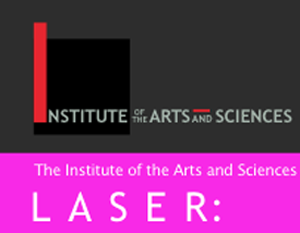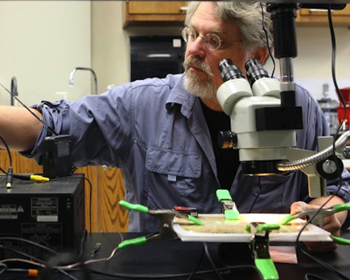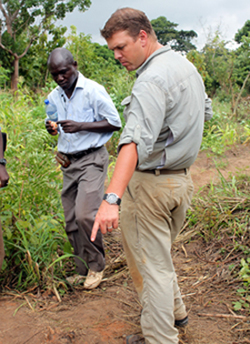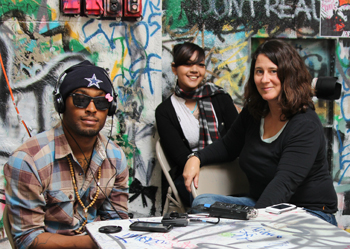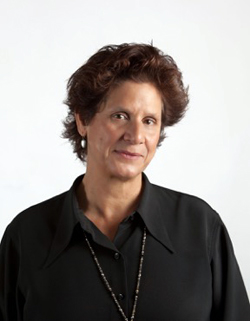UC Santa Cruz’s Institute of the Arts and Sciences will continue its series of LASER talks on campus this spring on Tuesday, March 31, at 7 p.m. in the Digital Arts Research Center.
The event will include presentations by three UC Santa Cruz professors--David Dunn (“Communication Within the Soundscape"), Jennifer Maytorena Taylor (“Selfies, Surveillance, and Social Documentation"), and J. Cameron Monroe (“Cana in Dahomey--A West African City in the Era of the Slave Trade”)--plus guest conceptual artist and photographer Catherine Wagner from Mills College ("Art & Science: Investigating Matter").
David Dunn is an assistant professor of sound art and design in the UC Santa Cruz Music Department and a core faculty member in the Digital Arts and New Media graduate program.
Over the past decade, Dunn has largely abandoned the pursuit of musical composition as an expressive form of communication to investigate the potential of sound to directly alter biological systems. Most recently, this has taken the form of designing acoustic strategies and technology to interfere with the population cycles of invasive insects directly tied to forest and agricultural destruction and global climate change.
Dunn said his talk will focus upon both his current and past work, and its underlying environmental argument.
“A number of questions are consistent throughout my work,” Dunn noted. “What do music and sound contribute to our understanding of the question of mind? What is accomplished by strengthening our aural sense within a visually dominant culture? What is gained or lost by a shift towards an aural perception of the world? And how can art participate in the discovery of solutions that can accelerate or extend those of science?”
Assistant professor of film and digital media Jennifer Maytorena Taylor is an award-winning documentary producer and director of character-based, social-issue feature films and community journalism projects.
Her recent work includes the award-winning documentaries New Muslim Cool and Special Circumstances, and Street Knowledge 2 College, a 15-part web series for PBS.org.
“In a furiously changing media landscape where almost anybody can be a producer and almost nobody can afford to be careless about personal privacy, social documentary filmmakers increasingly need to explore and understand the increasingly sophisticated ways in which under-represented communities use media,” said Taylor.
“I will show a number of examples from different projects of how I have experimented with a variety of production approaches to build authentic, meaningful, and universal stories about--and sometimes with--people in criminalized and/or marginalized communities and groups,” she added.
Associate professor of anthropology J. Cameron Monroe is the director of the Archaeological Research Center at UC Santa Cruz. Specializing in the archaeology of West Africa and the African Diaspora, he leads the Abomey Plateau Archaeological Project (Bénin), which explores the dynamic histories of urbanism in West African during the era of the trans-Atlantic slave trade.
“In the past few decades, archaeological research at forts, palaces, and rural villages across West Africa has rapidly transformed our understanding of how local societies coped with the widespread impacts of the trans-Atlantic slave trade,” Monroe noted.
Monroe said his talk will introduce the results of over a decade of archaeological field research in the Republic of Bénin at the town of Cana. Cana was a major urban center of the Kingdom of Dahomey, a principle West African partner in the trans-Atlantic.
Catherine Wagner is an award-winning artist and professor of studio art at Mills College who has been honored with the Rome Prize, a Guggenheim Fellowship, NEA Fellowships, and the Ferguson Award.
Her work is represented in major collections such as the Los Angeles County Museum of Art, SFMOMA, and The Whitney Museum of American Art.
Wagner said her presentation will be an edited version of artworks from her projects Art & Science: Investigating Matter, Cross Sections, Morphology, and Trilogy: Reflections on Frankenstein.
“For over 20 years I have been observing contemporary culture,” said Wagner. “My process involves the investigation of what art critic David Bonetti calls ‘the systems people create (in essence the human condition), of our love of order, our ambition to shape the world, the value we place on knowledge, and the tokens we display to express ourselves.’ To this end, I have examined institutions of learning and knowledge; our homes, and all of the ways we display who we are; Disneyland; science labs, including human genome research; and lastly, the structures that support art for museums.”
Admission to the March 31 LASER talk is free. The presentations begin at 7 p.m. in the Digital Arts Research Center building (DARC--Room 108).
For more information, contact the Institute of the Arts and Sciences at ias@ucsc.edu.
The Institute of the Arts and Sciences is one of the priority initiatives of UC Santa Cruz’s comprehensive fundraising campaign announced in the fall of 2013.
The Campaign for UC Santa Cruz supports excellence across the university through increased private investment in the people and ideas shaping the future. It is bringing critical new resources to each academic division, and to signature initiatives in the Student Experience, Genomics and Health, Coastal Sustainability, the Institute of the Arts and Sciences,
